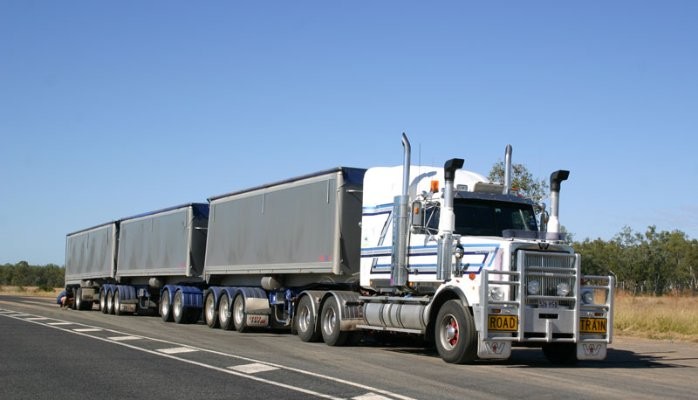
Australian Road Trains & the 3X Rule
Road trains are known to be the world’s longest trucks, used in heavy hauling trucking. They are used for transport in the Australian outback with trucks commonly pulling at least 3 trailers at a time. The size of these trucks is out of the ordinary for the American logistics industry but the best logistics executives take this 3X perspective into setting goals for their operation.
The 3X Rule
This is the focus of the 3X Rule: You must set targets that are 3 times what you think you want and then do 3 times what you think it will take to accomplish those targets. Massive thoughts must be followed by massive actions. There is nothing ordinary about the 3X Rule. It is simply what it says it is: 3 times the thoughts and 3 times the actions of other people. The 3X Rule is about pure domination mentality. You never do what others do. You must be willing to do what they won’t do—and even take actions that you might deem ‘unreasonable.
This domination mentality is not about controlling your team; rather, it’s about being a model for your teams thoughts and actions. Your mind-set and deeds should serve as gauges by which the people of your operation can measure themselves. 3X logistics leaders never approach a target aiming to achieve just that goal. Instead, they’re looking to dominate the entire industry—and will take unreasonable actions in order to do so. If you start any task with a mind toward limiting the potential outcome, you will limit the actions necessary to accomplish that very goal.
As a leader in the logistics industry you can have 3 types of goals. Box truck goals, 53 footer goals, or Australian road train goals. The best executives in the industry have Australian road train goals and then they spend their days taking massive action to achieve these massive goals.
Takeaways from this Post
1) How can you 3x your goals for the 4th quarter of this year?
2) Follow this Blog
Owner at Designs For You Baskets
8yA very interesting article. I have to wonder and hope that the Australian trucking companies have more sense than those in BC Canada. This article does not just apply to the trucking industry, the goals can be used in any type of industry for a growth potential. In BC when we were operating 45' flats we were actually taking home more money per month than when we started operating the B and A trains and then to make it worse we moved onto the super trains. The problem being here in BC in most cases the CUSTOMERS get to dictate what they are going to pay for the loads instead of the trucking companies. Something definitely wrong with this logic. This all seemed to really take hold after deregulation and also the companies farming out their freight to freight brokers who have no ownership in any of the equipment. This is where a lot of the "cheap" freight now comes from, but can we go to a grocery store and pick up a $25.00 item and tell the manager we are only paying them $10.00 - Doubt it so why should the trucking industry accept this. I believe that pulling 3 trailers is not a problem at all providing that the rates justify the costs of putting these units on the road. There is no point buying equipment to run it for free.
Transportation professional seeking inside opportunities in our dynamic world of transportation/logistics.
8yProblem is that you are not mentioning who caused the initial crash situation, comparison numbers (base numbers v totals in terms of statistical analysis on a per annum basis), road and weather conditions, driver age, driver experience and how long driving (car v transport), crash timing (time of day). I look forward to hearing from you
.
8yWORK-RELATED FATALITIES INVOLVING TRUCKS, AUSTRALIA, 2003 TO 2012
.
8yOver the 10 year period 2003 to 2012, 787 workers were killed in truck-related incidents. These deaths amount to 30% of all worker fatalities over this period. Males accounted for 94% of truck-related fatalities. Truck-related fatalities include drivers of trucks killed in vehicle crashes as well as workers who are working on or around a truck at the time of the incident. Truck-related fatalities were not limited to those where the truck was the sole contributor to the fatal incident. Key statistical findings of this report include: • Three-quarters of the worker fatalities in truck-related incidents occurred on a public road with these typically involving a vehicle crash. • 80% of the truck-related incidents on a public road involved the death of the driver or passenger in a truck. • 39% of truck-related fatalities involved single vehicle truck crashes. • Incidents that occurred while loading or unloading a vehicle accounted for 15% of the truck-related fatalities while repair and maintenance activities accounted for 7%. • Transport, postal & warehousing workplaces accounted for half of the truck-related fatalities. Construction workplaces accounted for 10% of fatalities and Agriculture, forestry & fishing accounted for 8%. •
.
8yI'd go for the 3X rule , JUST SO LONG AS ITS LEGAL. " and even take actions that you might deem ‘unreasonable"